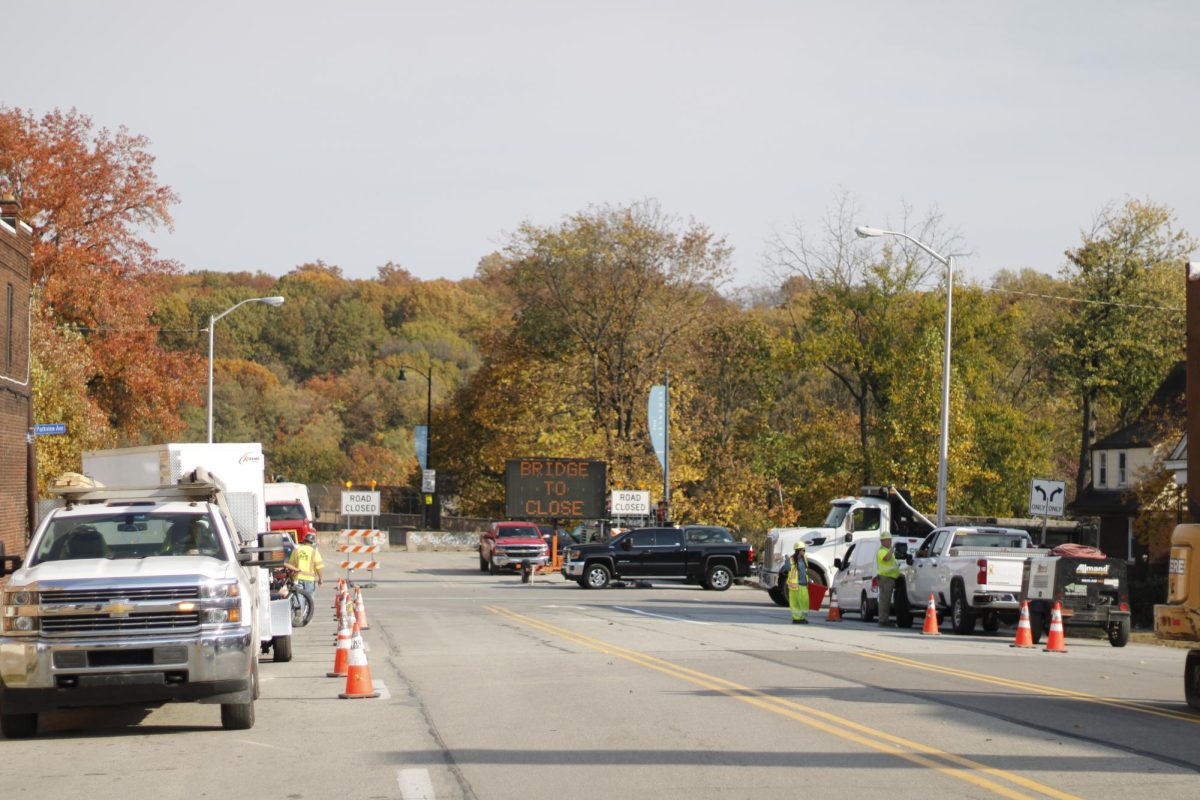Following the 2022 Fern Hollow Bridge collapse, Pittsburgh officials say they are stepping up efforts to prevent history from repeating itself.
“We realized that these bridges needed more proper attention that they were not getting in the past,” Olga George, press secretary for Mayor Ed Gainey in the City of Pittsburgh, said. “We are making sure that they get the attention they need so we don’t wake up to another Fern Hollow Bridge collapse.”
The Panther Hollow Bridge in Oakland closed for maintenance on Oct. 19 following an inspection. While there is no date for when the bridge is expected to reopen, the inspection is one of many precautions the City of Pittsburgh is taking to prioritize bridge infrastructure.
The closure of Panther Hollow Bridge was reported by an inspection consultant who is responsible for periodically inspecting the bridges. The engineers were conducting a load rating analysis to assess the bridge’s capacity to support vehicle weight, taking into account its current state, including any rust or deterioration. This analysis raised concerns when the calculated numbers did not meet safety expectations, prompting further scrutiny and caution.
When it comes to a decision like closing a bridge, the City of Pittsburgh collaborates with the Pennsylvania Department of Transportation to ensure that bridge inspections meet safety standards.
“Together, we decided to close the bridge, and they are still working these calculations. But to close the bridge for now, just to be on the safe side until they can refine and finish their calculations,” Eric Setzler, chief engineer at Department of Mobility and Infrastructure at City of Pittsburgh, said.
Andrea Boykowycz, executive director of Oakland Planning and Development Corporation, emphasized how closing bridges impacts community access.
“With regards to these bridges, there’s a limit to what [the city] can do, but we need to make sure that they understand the consequences of closures and redirects, in terms of, how children get to school, and where the people can walk to the playground,” Boykowycz said. “We offer opportunities for the city to explain and to interact directly with residents via meetings.”
Transportation became more complex after closing the Panther Hollow Bridge since the Charles Anderson Bridge was already under construction, limiting the amount of roads to choose from.
“We certainly recognize that it is a big inconvenience for folks trying to get around, unfortunately, there’s not much we can do. We have to take safety first, and that’s why we closed it,” Setzler said. “We have posted detour signs just to try to help people who don’t know about the closure. We made sure to get it reported to Google Maps so that people aren’t getting directed over that bridge repeatedly.”
Currently, there is no set timeline for the bridge’s reopening because of ongoing inspections and calculations. Setzler said the bridge will reopen “in the near future.”
“There will be several more weeks to finish their calculations, and then at that point, we need to assess, based on their final calculations, exactly what or how much might need to be fixed, or what the course of action is,” Setzler said.
The collapse of Fern Hollow Bridge alarmed the city to pay more attention to the bridge’s safety, according to George.
“When the Fern Hollow Bridge collapsed, that’s when Mayor Gainey had just come into office,” George said. “And one of the things he stated is making sure it never happens again that he does not receive a phone call that a bridge has collapsed in the City of Pittsburgh.”
Setzler said that since then, the City has focused more resources and funding on bridge safety.
“On the safety measures, the bridge inspection program has a lot of systems built in,” Setzler said. “If critical conditions are noted in the field, those are reported to us as the bridge owner, and depending on the severity of it, we have to deal with them in a certain period of time, which could be two years, it could be six months, it could be one week or it could be immediate.”
In order to keep the city’s bridges safe, the City put in place new technologies and systems.
“We have started a comprehensive Asset Management Program for our bridges where we’re taking all that data from bridge inspections, getting it into a management system,” Setzler said. “It helps us to both track maintenance needs and track those kinds of smaller things that need to be done on a continued basis.”
Mayor Gainey also established a bridge maintenance division, which George said is responsible for reviewing bridges and doing on-site inspections.
“We are really checking out the bridges to make sure that we never encounter another collapse of one of our bridges in the city, which is one of the reasons why the Panther Hollow bridge got closed,” George said.
Looking forward, Setzler said the City is planning more rehabilitation and replacement projects.
“We have a lot of larger bridge projects in the design phase right now,” Setzler said. “But as some of these other projects move through design, in the next two years or so, we’re going to start seeing a lot of bridges under construction.”


